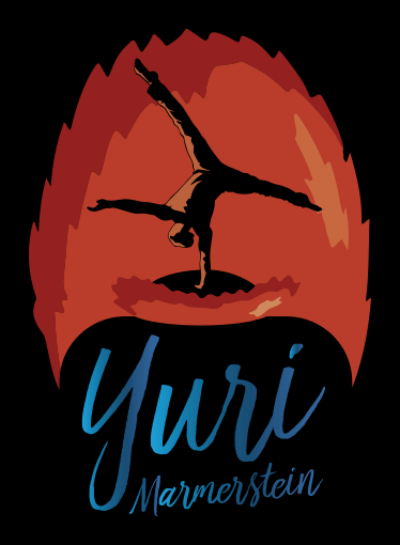I want to talk a little bit about one arm handstand holds against the wall; the benefits, the flaws, and where they stand in a realistic skill progression.
I think there is a common misconception that OAH against the wall is somehow a progression for the freestanding one arm handstand. This is simply not the case despite the many benefits of the exercise.
It makes sense to me why people might think this way, and I think part of it comes from ignorance and lack of appreciation of what it really takes to balance a freestanding OAH.
When it comes to balancing a regular two arm handstand, the wall is quite a valuable tool. It can help to help feel what it is to control the balance while minimizing over-stimulation and frustration.
Even still, the progression is not as direct as wall HS -> Free HS. There are many steps and details along the way which I discuss in MY EBOOK
So where does a OAH against the wall come into play? If your goals do not include the freestanding one arm balance, this can still be a very useful exercise for conditioning work, endurance, and coordination. It can be implemented pretty early on once you are solid with two arms against the wall and know how to bail out when needed.
Here are some benefits of OAH against the wall:
-Creating better support structure through the uper body
-Increasing strength to prepare for more advanced skills
-Enhancing endurance work by allowing to switch between arms
If you are working your true one arm handstand, the wall variation has different uses:
-Increase strength and endurance in one arm holds
-Learning to understand the weight shift from hand to hand while taking the balance one of the equation
-Improving form and technique for the one arm position
-Using the wall as a tactile cue to detect hip rotation
So now that we got that out of the way, here is a very important concept to understand:
NO AMOUNT OF OAH WORK AGAINST THE WALL WILL EVER TEACH YOU HOW TO BALANCE ON ONE ARM
Sorry if this breaks your world. Balancing a one arm handstand can take years of specific training, and no amount of wall work or fake one arm social media photos can change that.
Take a look at this one arm handstand progression video I made over 4 years ago:
See where the OAH wall work is? Almost at the bottom rung of the actual one arm training(you can do it much earlier than this in your practice, but it needs to be done in a very specific way for true OAH).
While I may have a different perspective now than I did then, I still agree with the ideas and progressions in this video.
Use the wall to help learn how to shift weight, build strength, or correct imbalances/faults.
I also prefer the work be done facing the wall since it encourages better form and build a more realistic alignment for freestanding one arms.
Other than that, the bulk of your practice should be freestanding if you are at that level.
Here is the final takeaway analogy from this article:
THE FREESTANDING FINGERTIP SUPPORTED ONE ARM HANDSTAND IS THE EQUIVALENT OF THE WALL HANDSTAND ON TWO ARMS
This is where the majority of your OAH skill work should be spent when learning it
Summary:
-Do OAH against the wall. It's good for you and will help to build endurance, strength and awareness.
-Once you get higher in skill level however, it's uses become more limited and specialized.
-Since it takes away the element of balance, the wall supported OAH is mostly only useful as
assistance work when it comes to the true one arm handstand.
Final thoughts:
This whole article is a massive oversimplification, but I want to help clarify things and give people more realistic standards to have.
If your goal is to learn how to balance on one arm, please give the skill the respect it deserves.


